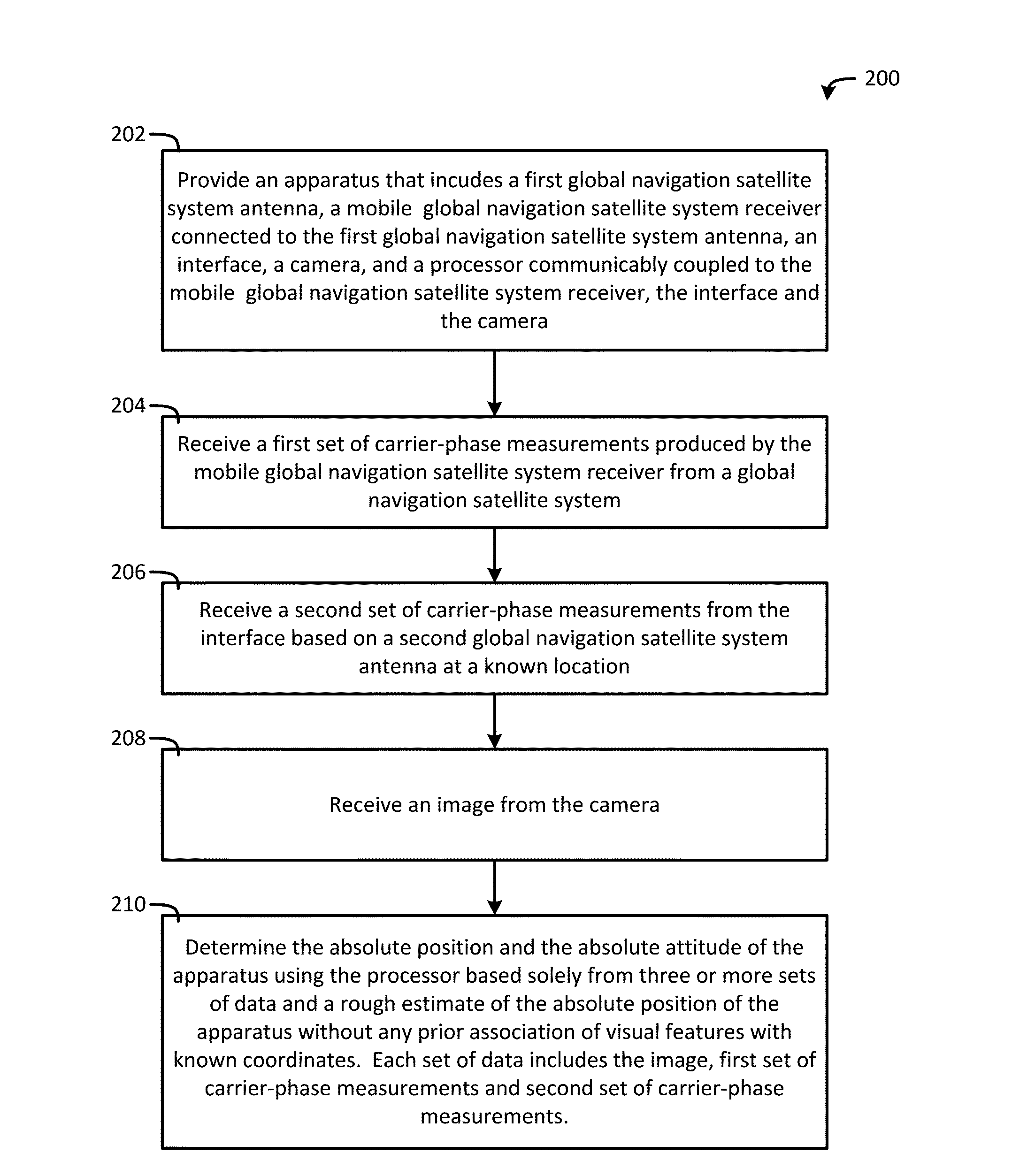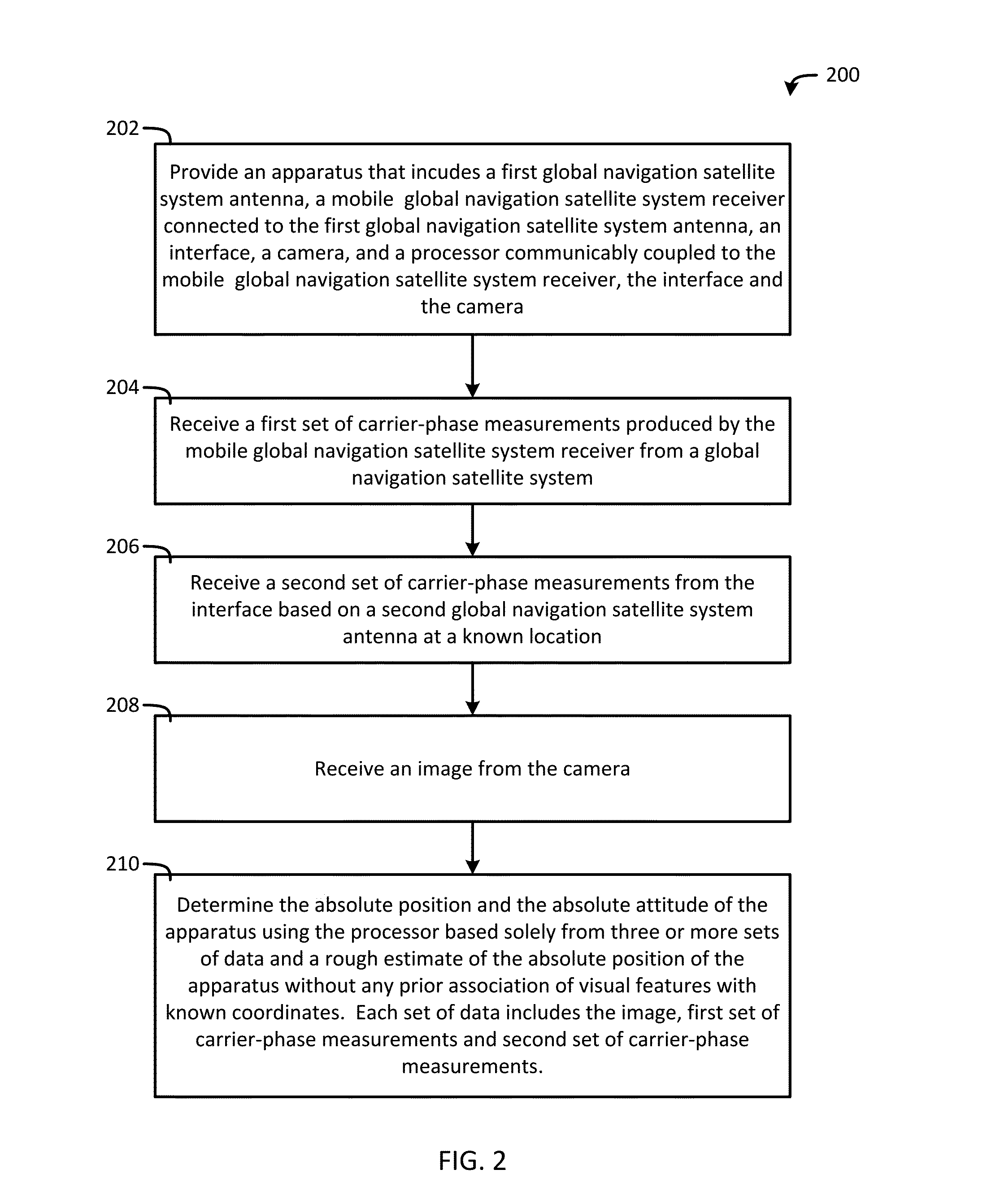System and method for using global navigation satellite system (GNSS) navigation and visual navigation to recover absolute position and attitude without any prior association of visual features with known coordinates
a global navigation satellite and absolute position technology, applied in the field of navigation systems, can solve the problems of not having much commercial application value, difficult to create augmented visuals that provide a convincing illusion of realism, and a constant disappointment of ar, so as to achieve precise and absolute position and orientation of devices, precise and accurate absolute registration, robust and accurate
- Summary
- Abstract
- Description
- Claims
- Application Information
AI Technical Summary
Benefits of technology
Problems solved by technology
Method used
Image
Examples
Embodiment Construction
[0076]While the making and using of various embodiments of the present invention are discussed in detail below, it should be appreciated that the present invention provides many applicable inventive concepts that can be embodied in a wide variety of specific contexts. The specific embodiments discussed herein are merely illustrative of specific ways to make and use the invention and do not delimit the scope of the invention.
[0077]A system and method for using carrier-phase-based satellite navigation and visual navigation to recover absolute and accurate position and orientation (together known as “pose”) without an a priori map of visual features is presented. “Absolute” means that an object's pose is determined relative to a global coordinate frame. Satellite navigation means that one or more Global Navigation Satellite Systems (GNSS) are employed. A priori map of visual features means that the system has no prior knowledge of its visual environment; i.e., it has no prior associati...
PUM
 Login to View More
Login to View More Abstract
Description
Claims
Application Information
 Login to View More
Login to View More - R&D
- Intellectual Property
- Life Sciences
- Materials
- Tech Scout
- Unparalleled Data Quality
- Higher Quality Content
- 60% Fewer Hallucinations
Browse by: Latest US Patents, China's latest patents, Technical Efficacy Thesaurus, Application Domain, Technology Topic, Popular Technical Reports.
© 2025 PatSnap. All rights reserved.Legal|Privacy policy|Modern Slavery Act Transparency Statement|Sitemap|About US| Contact US: help@patsnap.com



